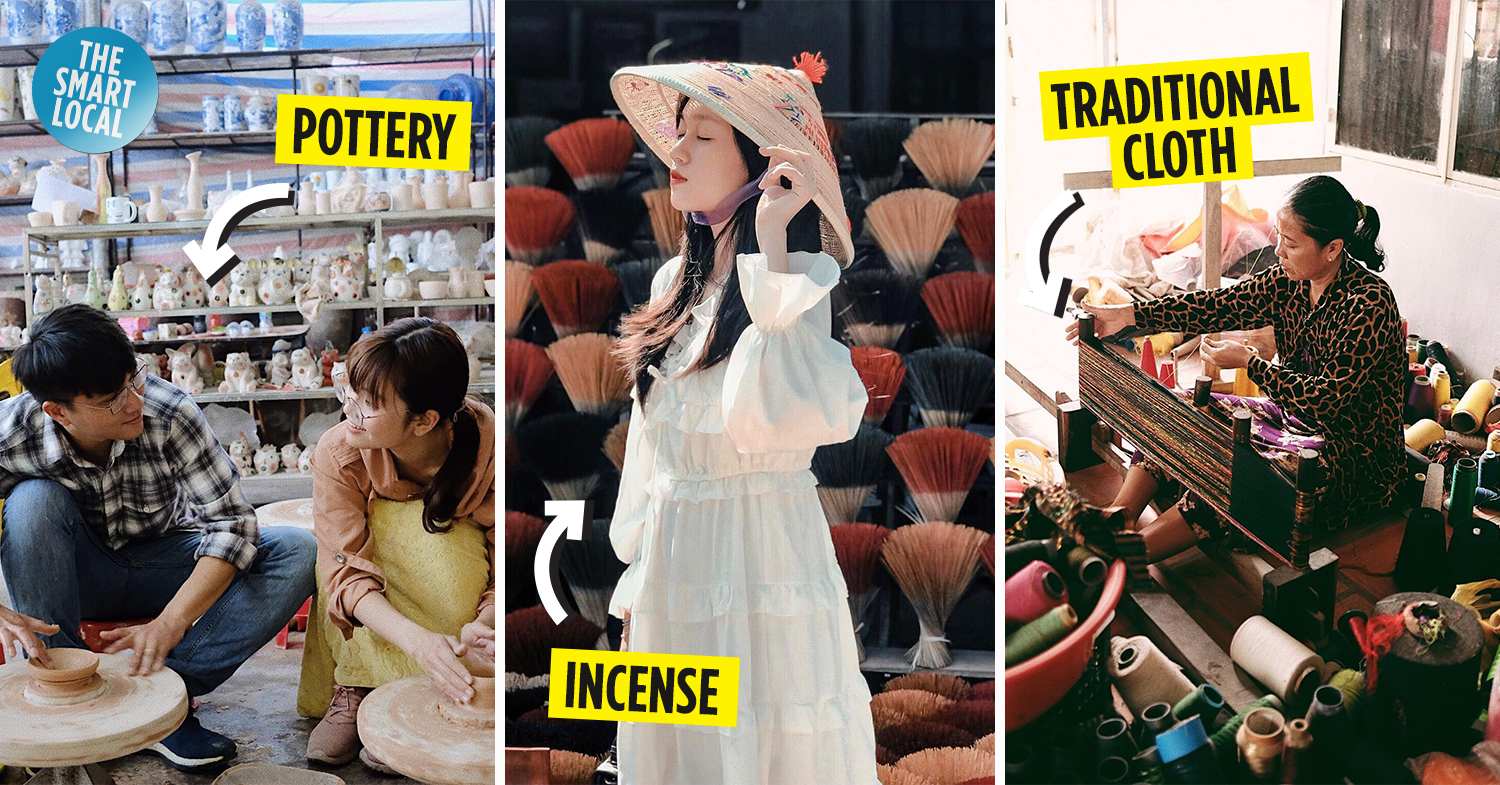Craft villages in Vietnam to explore local arts & culture
International tourists probably remember Vietnam for the magnificent Ha Long Bay, the serene Hoi An Ancient Town, or the bustling yet charmingly antique Hanoi Old Quarter. Yet as beautiful as these destinations are, they are but a fraction of what Vietnam has to offer.
Most often, but a short distance away from popular tourist spots, you can find traditional villages with generations’ worth of expertise in a specific craft just waiting to be discovered. So, if you have an extra day to spare during your trip, consider dropping by one of these 8 traditional craft villages in Vietnam for a closer look into the local culture.
1. Bat Trang Pottery Village – try your hand at making pottery
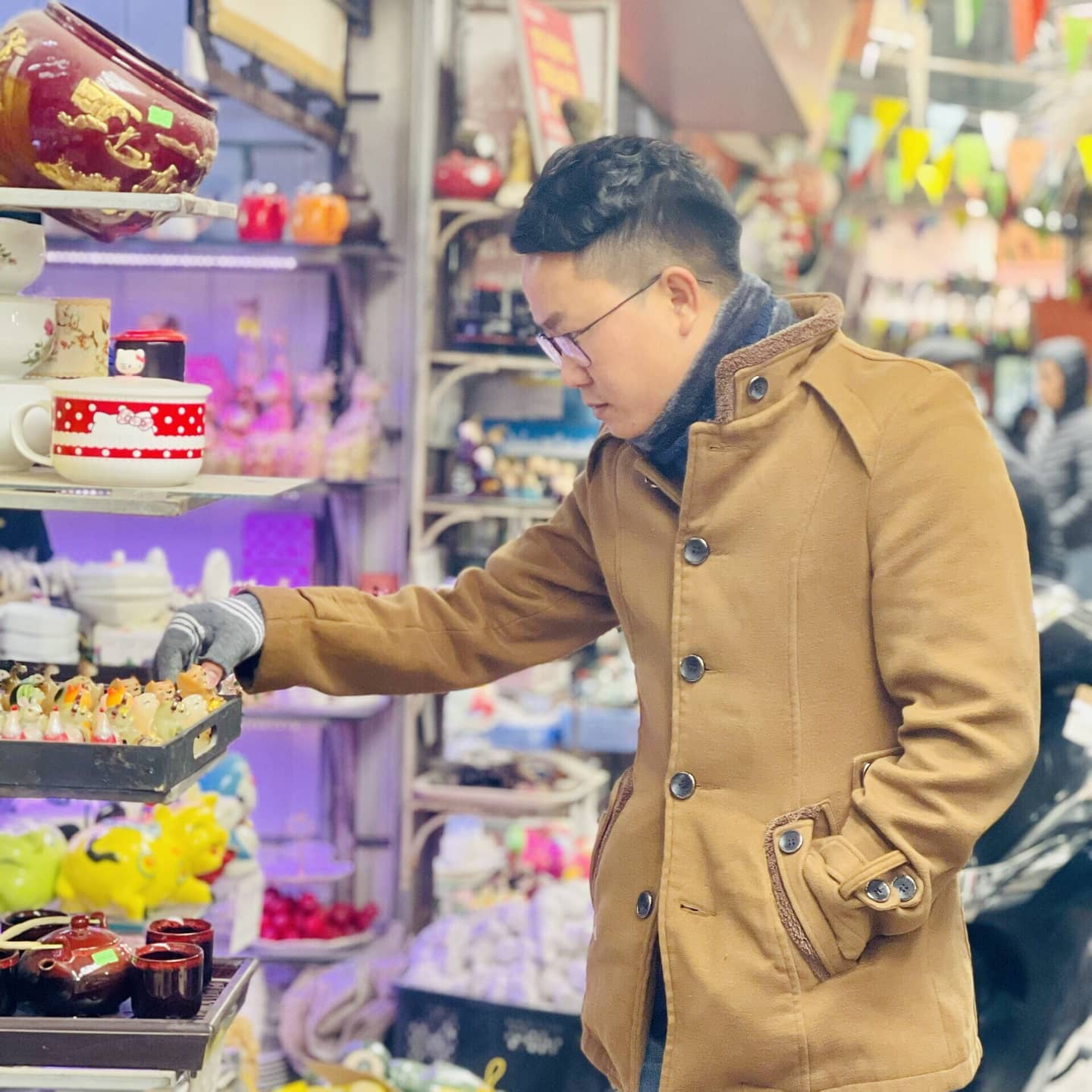
Plenty of pottery products for sale
Image credit: @vuducdiem
When “traditional craft villages in Vietnam” are mentioned, Bat Trang Village has to be the first name that pops up in many people’s minds. Less than an hour’s drive from Hanoi’s center, the village has been the birthplace of meticulous pottery products for centuries.
Today, the village is a well-known tourist attraction near Hanoi. At its center is a pottery market where you can browse all sorts of products, from human-sized vases to small accessories as souvenirs.
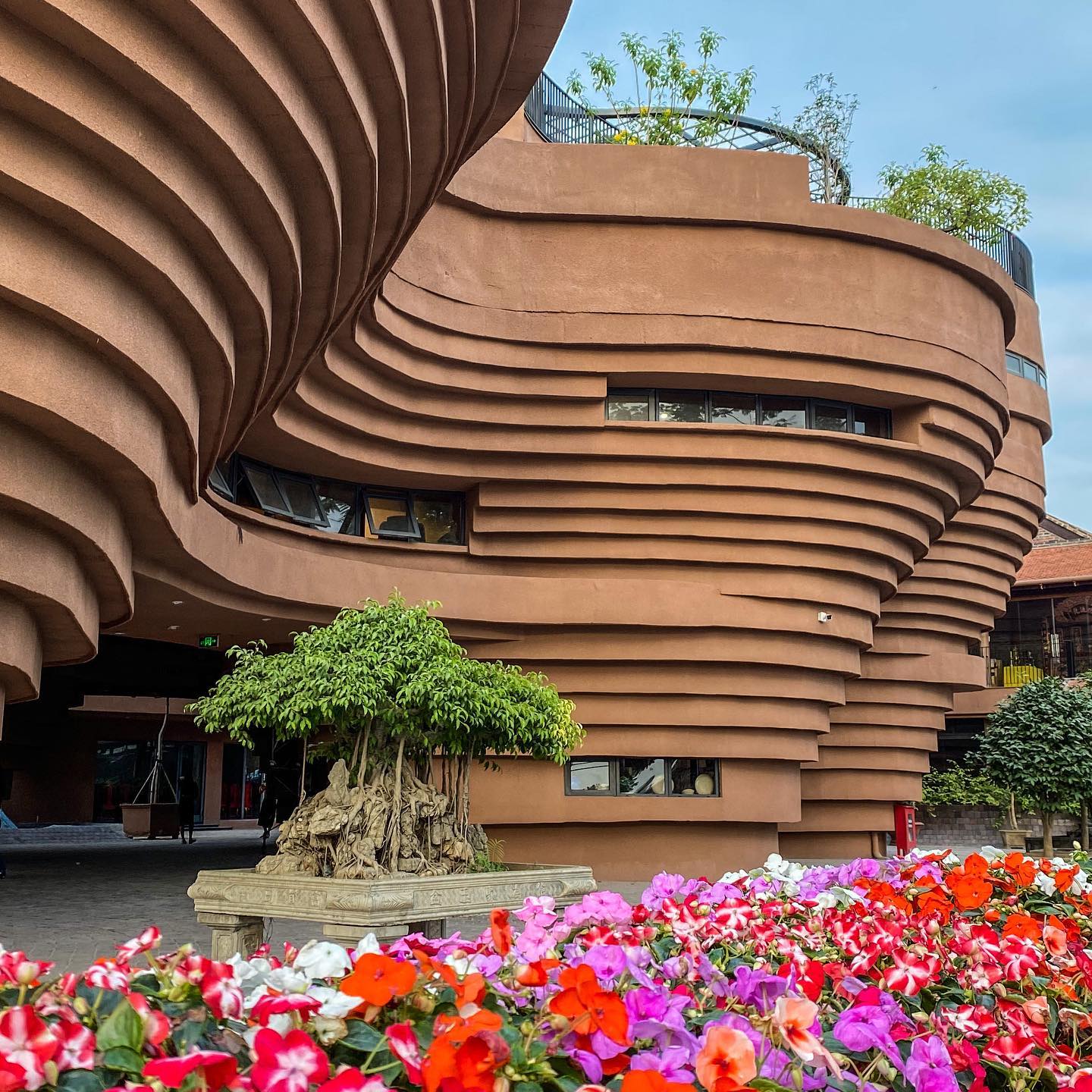
The Bat Trang Museum is a unique structure that resembles potters’ spinning tables
Image credit: @nomad_dazz
Don’t forget to check out the Bat Trang Pottery Museum, a unique structure designed to resemble potters’ signature spinning wheels. Though still not fully operational just yet, it has been a favorite check-in spot for many visitors. The building features exhibitions of impressive pottery products, a souvenir shop, and even a café.
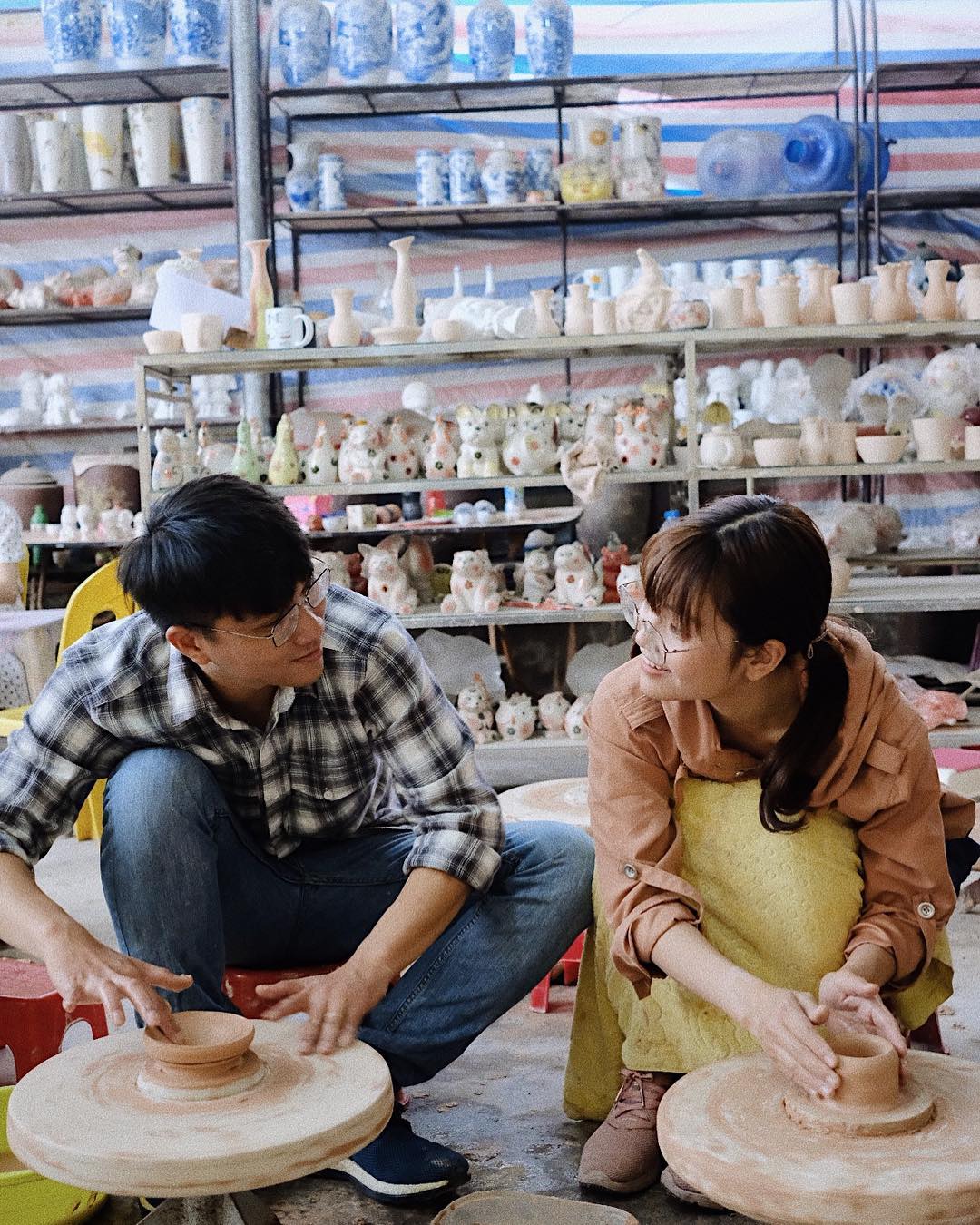
Make your own pottery products
Image credit: @lilunabin
A popular activity in Bat Trang Pottery Village is making your own pottery product – a service you’ll find many locals offering at their pottery shops. You can also choose to have your handiwork baked for increased durability, and color it to your liking.
GPS coordinates: 20°58’37.6″N 105°55’01.7″E
2. Dong Ho Painting Village – traditional paintings from natural ingredients
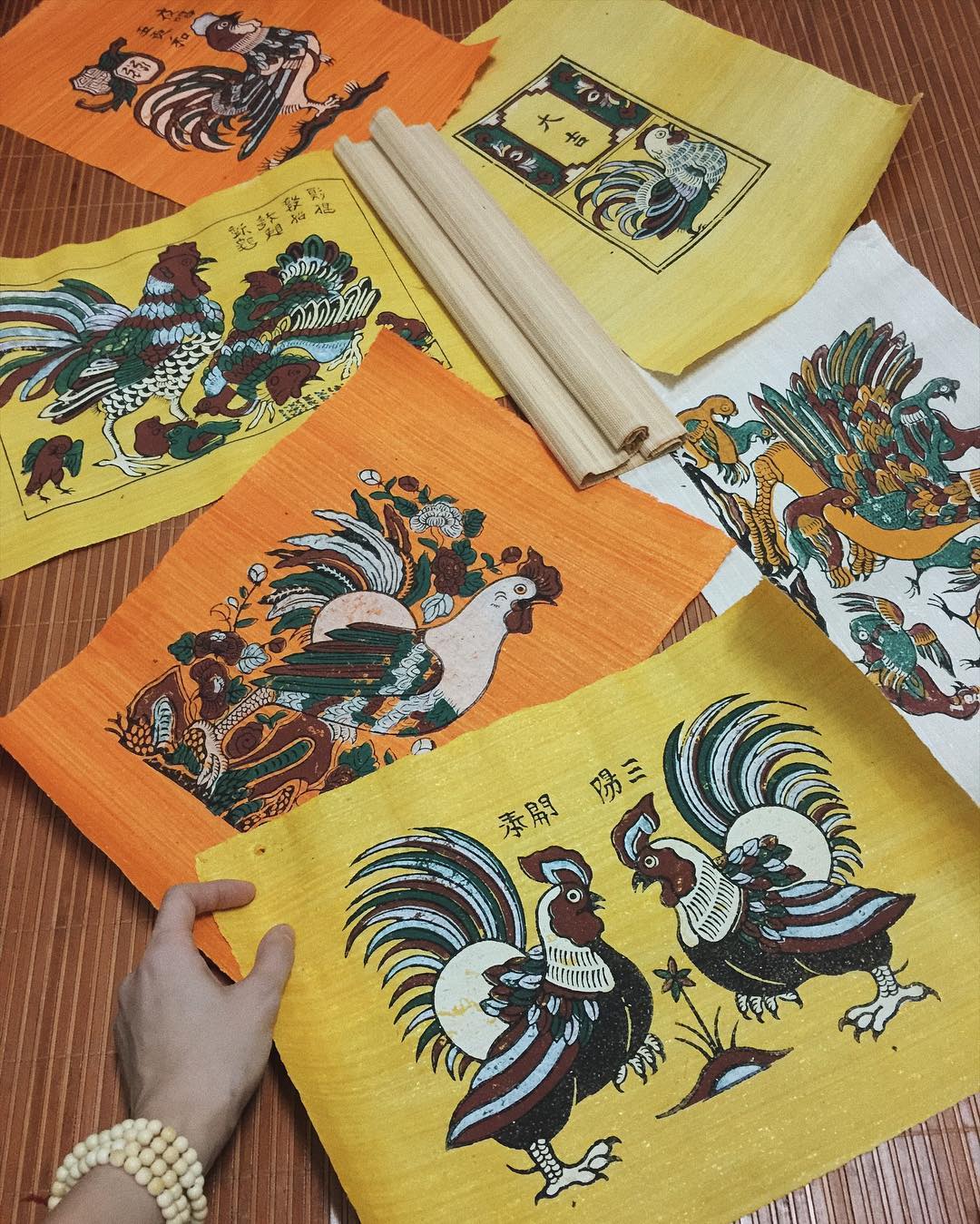
Dong Ho paintings
Image credit: @kukuluuu
The Dong Ho Village in Bac Ninh, 35km from Hanoi, is known as the birthplace of Dong Ho paintings – a form of traditional Vietnamese art. These paintings are printed from wooden molds into a special type of paper made from the bark of the Rhamnoneuron balansae tree, known in Vietnamese as dó. The bark is processed with glue and powdered clamshells, resulting in paper that’s very durable and water-resistant.
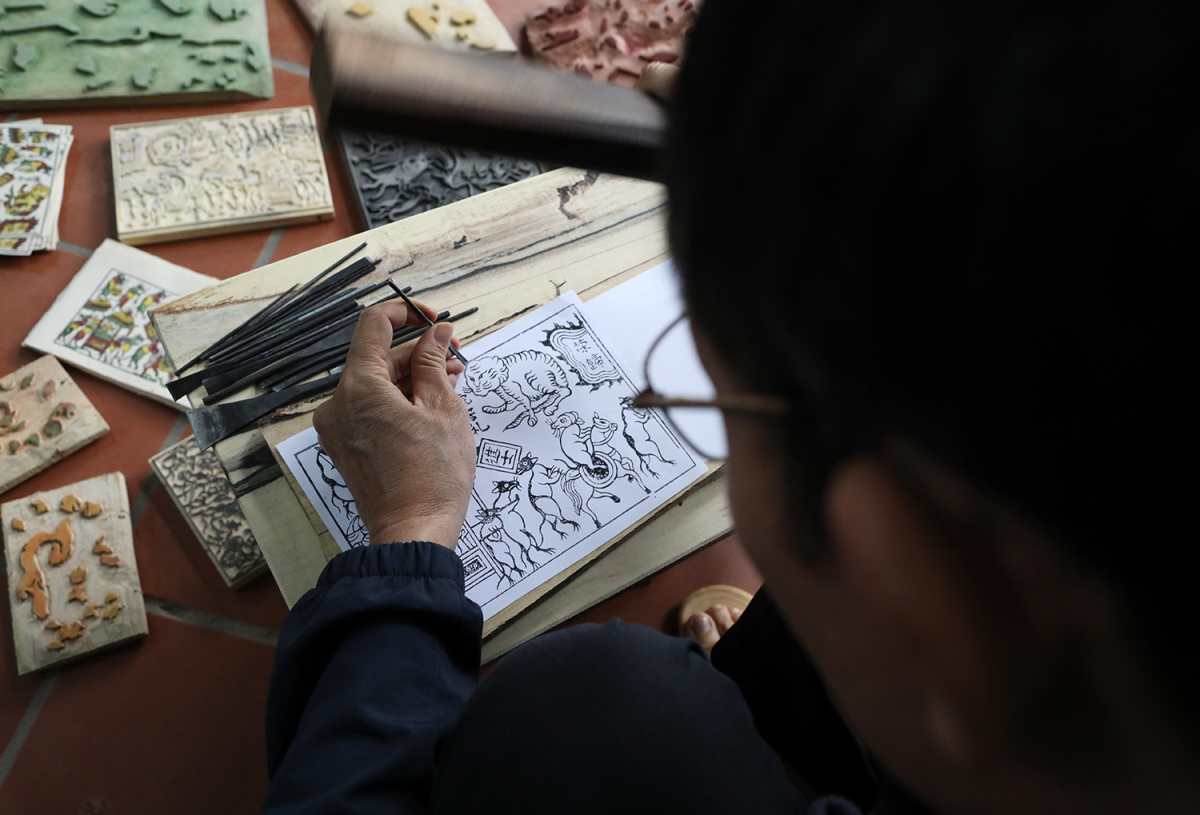
The paintings are printed from wooden molds
Image credit: VNExpress
Dong Ho paintings have bright colors that come from natural ingredients – black from charcoal, green from leaves, and so on. They depict Vietnamese rural life, sometimes through anthropomorphic animals, to reflect the people’s wishes for peace and prosperity.
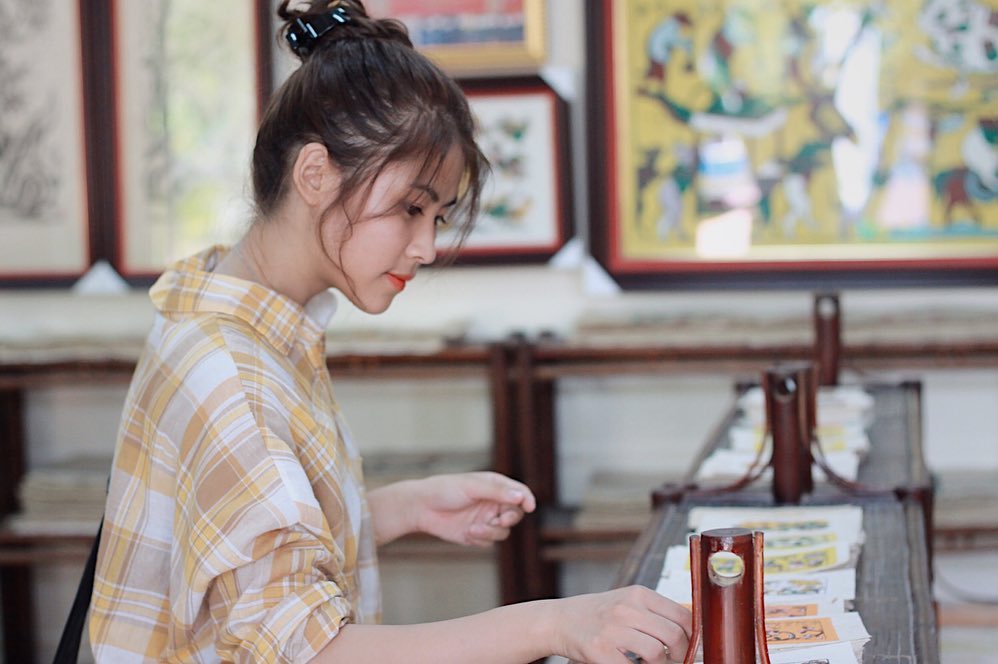
Browse for traditional paintings at Dong Ho Village
Image credit: @thuongduong_
Nowadays, Dong Ho Village isn’t a well-known attraction, and there aren’t many services here catering to tourists. However, those interested in Vietnamese traditional arts can drop by to learn more about the process of making these paintings, and of course, buy some if they wish.
GPS coordinates: 21°03’41.8″N 106°04’55.7″E
3. Van Phuc Silk Village – oldest silk-making village in Vietnam
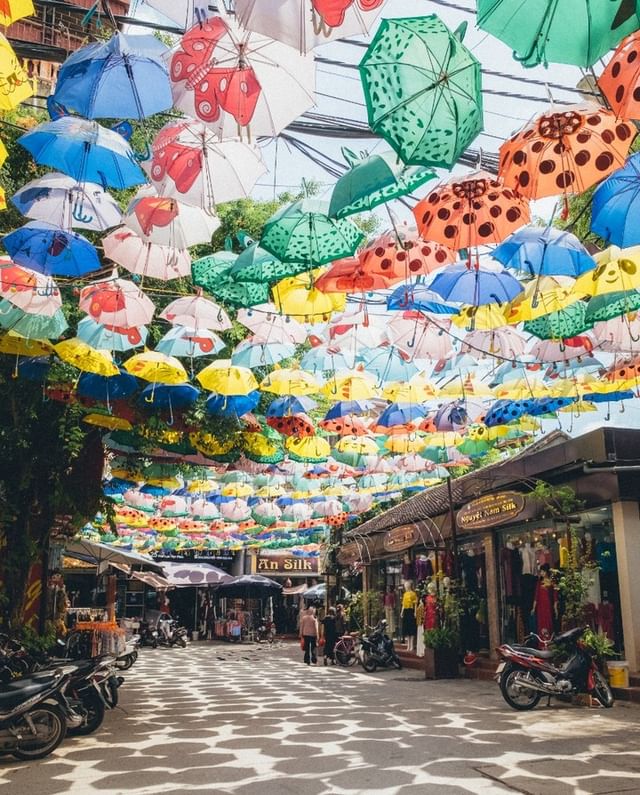
Image credit: @khoi.nguyen__
When you’re done exploring Hanoi’s bustling old quarter and sampling the delicious street food, Van Phuc Silk Village is another destination you can check out right inside the city. This is the oldest silk-making village still in operation in Vietnam.
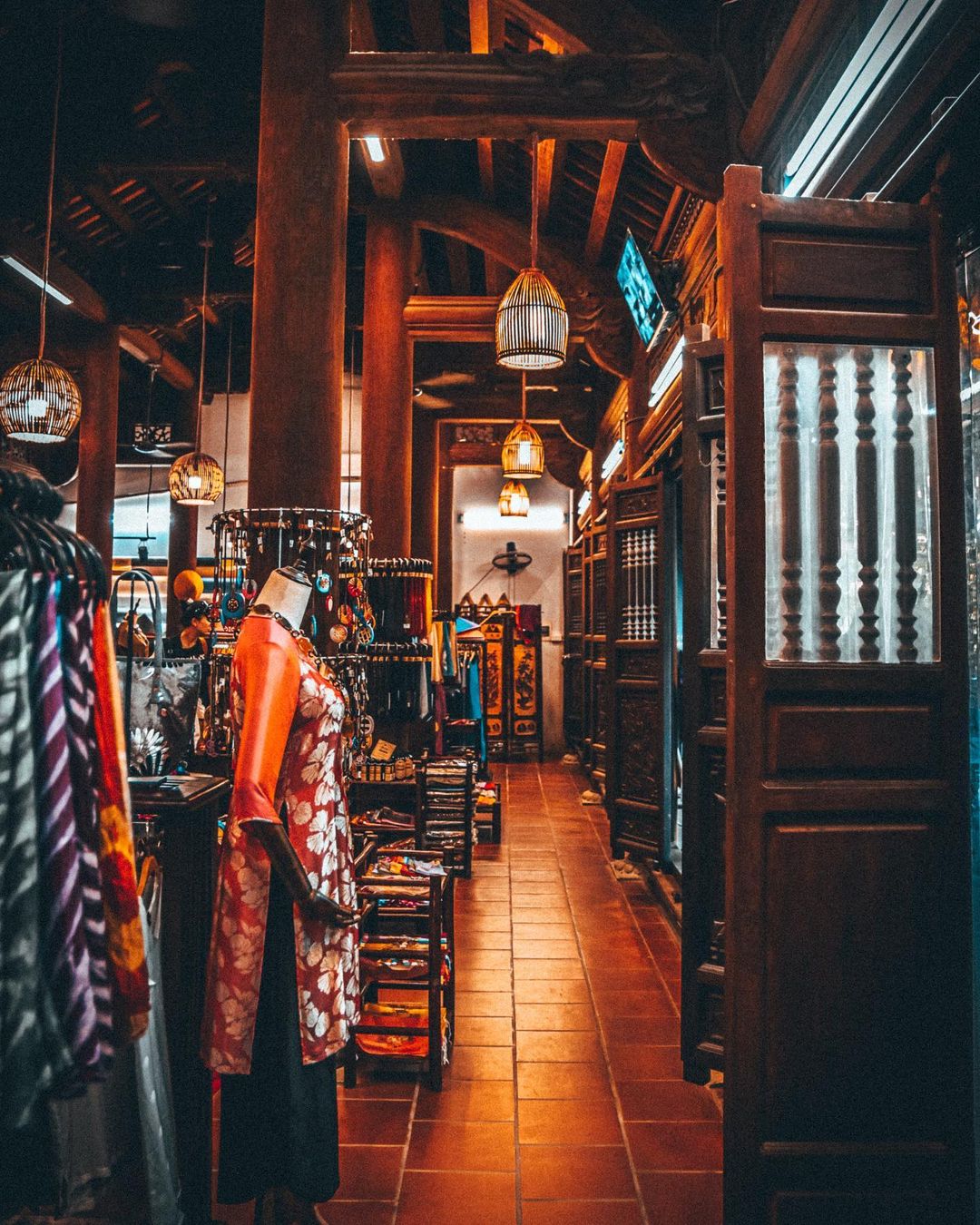
Plenty of silk products on display
Image credit: @nhat_bun
Past an ancient-looking gate that serves as the village’s entrance, you’ll find yourself on a street with colorful umbrellas hanging overhead. The street is lined by rows of silk shops, where you can browse products from uncut silk bolts all the way to silk áo dài.
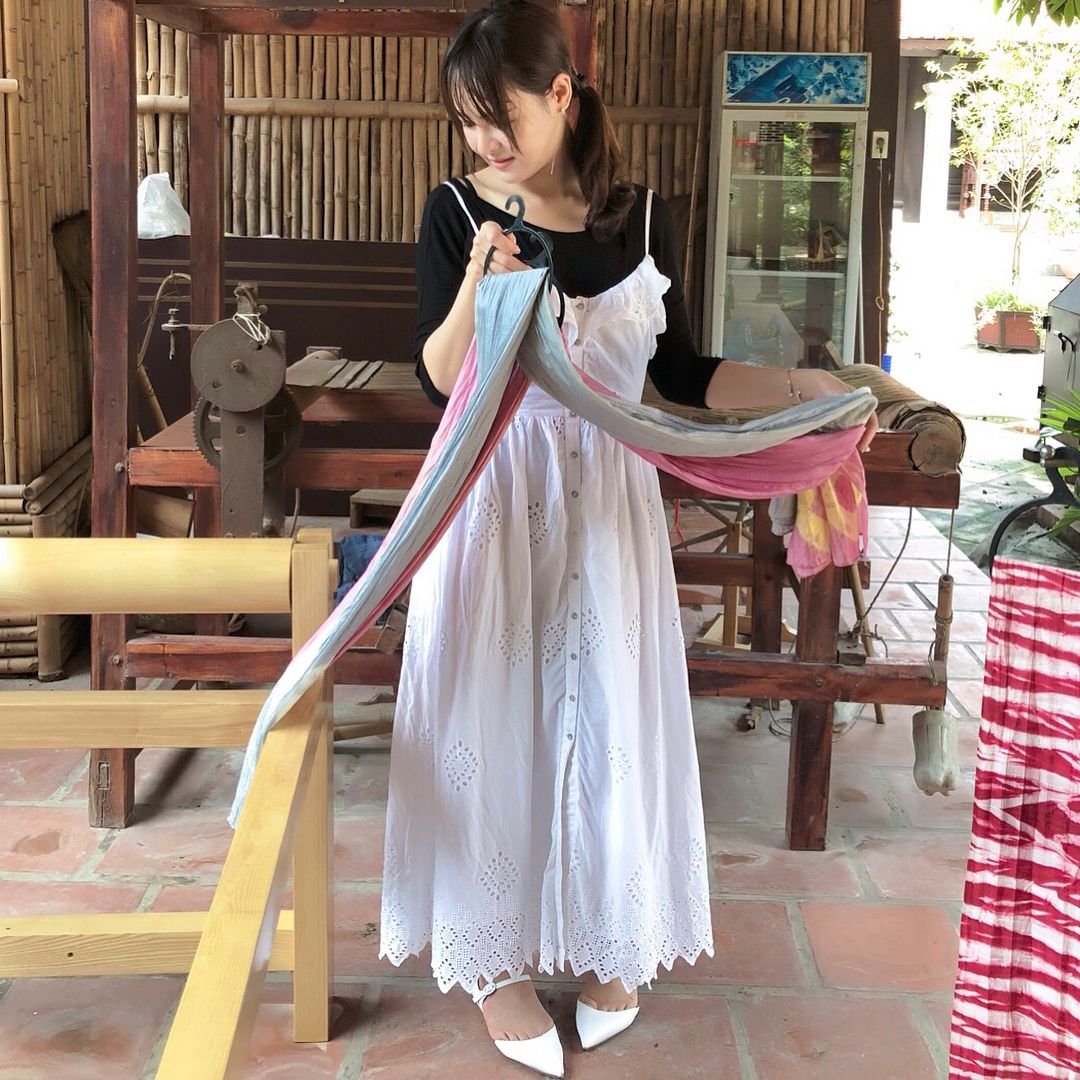
See how silk is made on weaving looms
Image credit: @mika204ever
Deeper inside are temples paying tribute to the village’s founders, and exhibitions featuring old weaving looms and other tools traditionally used in weaving silk.
GPS coordinates: 20°58’45.1″N 105°46’22.9″E
4. Chuong Straw Hat Village – a closer look into Vietnam’s iconic hat

See locals making and selling conical hats at Chuong Village
Image credit: Nam Nguyen
The conical straw hat, or nón lá, is an all-too-familiar image of Vietnamese culture. Thanks to being lightweight, easy to make, and offering good protection against both sun and rain, the item is commonly used by farmers and street vendors in their daily endeavors.
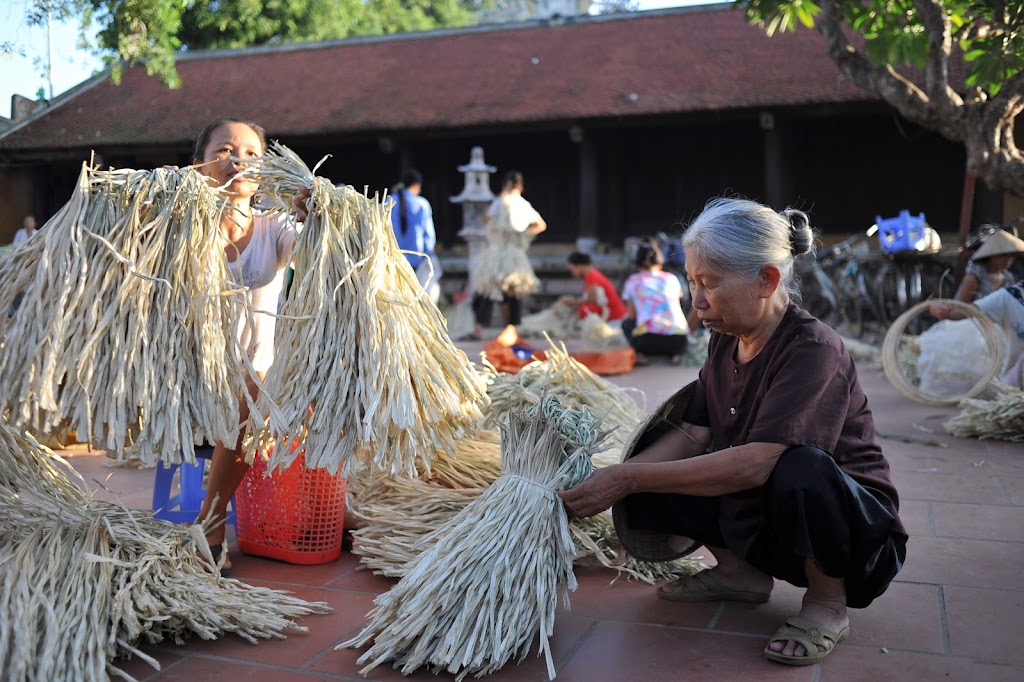
Image credit: Nam Nguyen
If you want a closer look into this iconic piece of attire, drop by the Chuong Straw Hat Village, 30km south of Hanoi, where any citizen can tell you all about the ins and outs of what goes into a quality hat. Many shops here offer conical hats decorated with paintings as souvenirs.
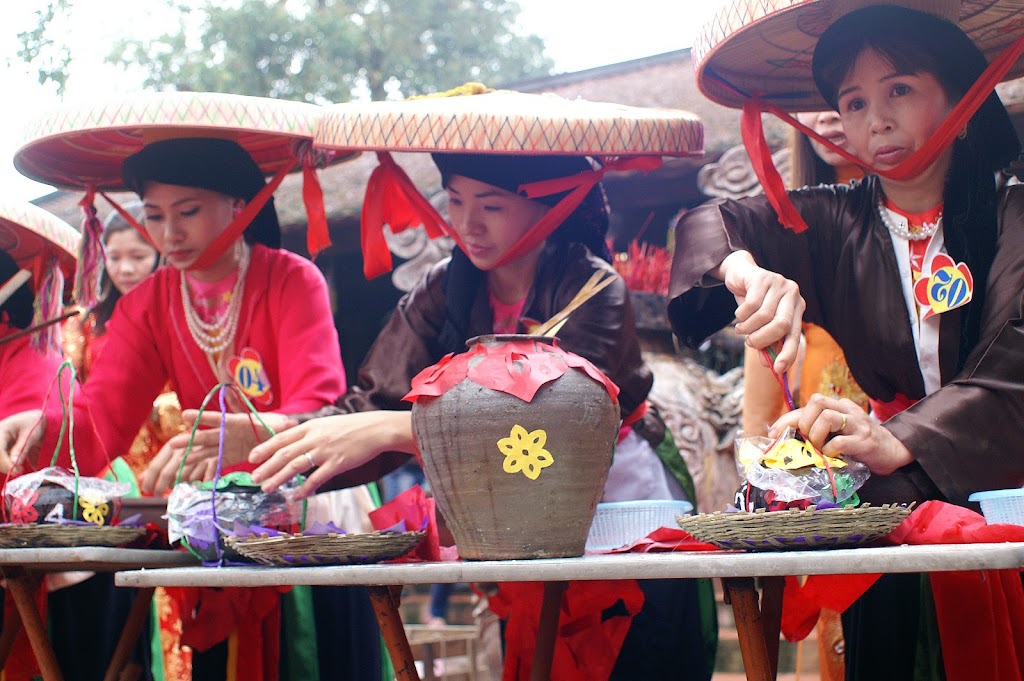
Nón quai thao has a flattened shape
Image credit: Nam Nguyen
Aside from the conical hat, you can also find another type of flattened hat called nón quai thao. Traditionally, these hats were worn by northern Vietnamese women, though nowadays they are mostly only seen in performances or festivals.
GPS coordinates: 20°49’34.1″N 105°45’39.7″E
5. Thuy Xuan Incense Village – lovely backdrops for pictures
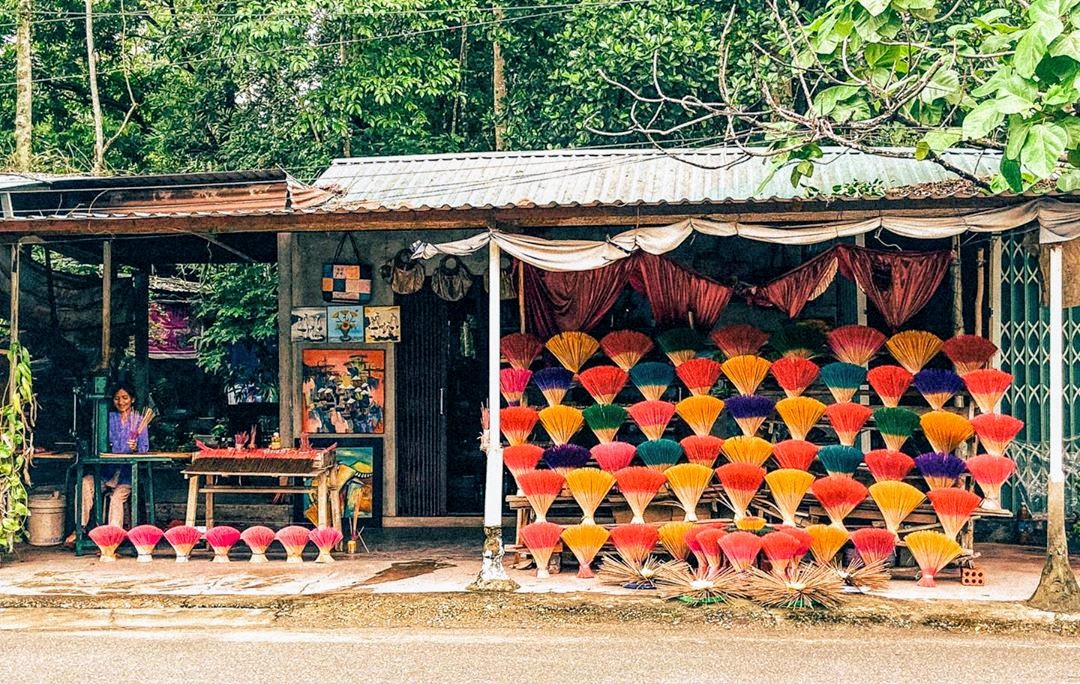
Image credit: Dinh Tuan
Historically, Thuy Xuan is the name of a traditional incense-making village in Hue City – formerly the capital of Vietnam. For centuries, the village provided incense to the royal Nguyen family.
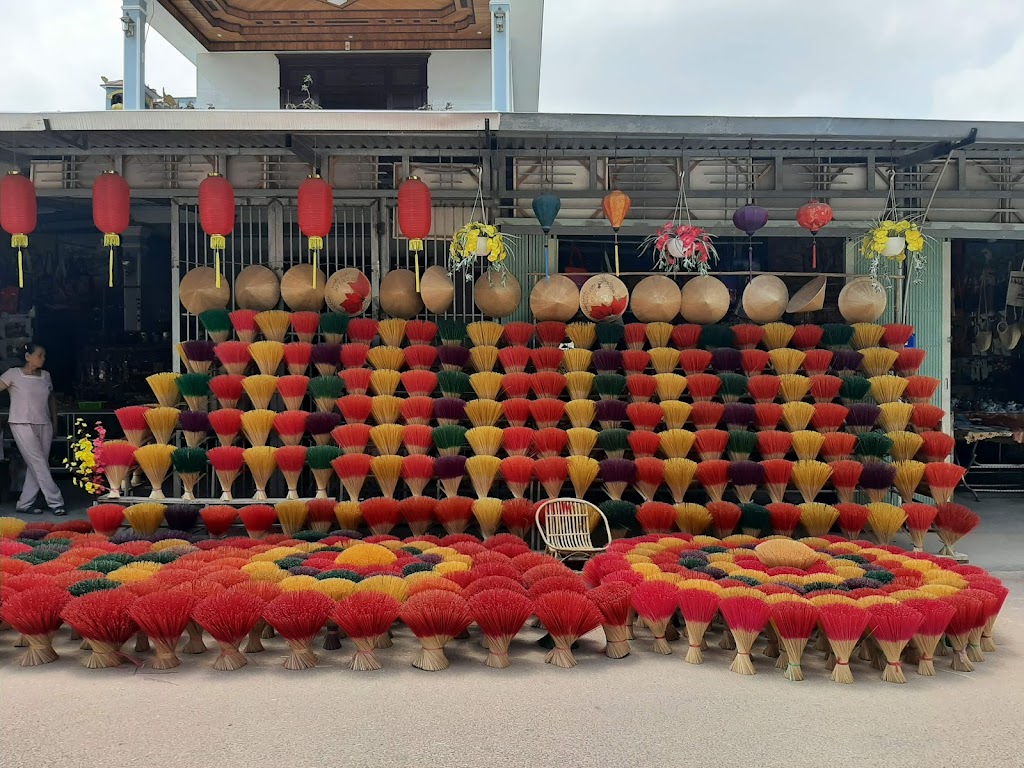
Image credit: Phuong Dung Nguyen
Nowadays, only remnants of the village remain, but it’s still a popular check-in spot for visitors coming to Hue. On the way to the Tomb of Emperor Tu Duc – a major historical site and tourist spot – you’ll come across several households displaying large batches of colorful incense, which make for nice picture backdrops.
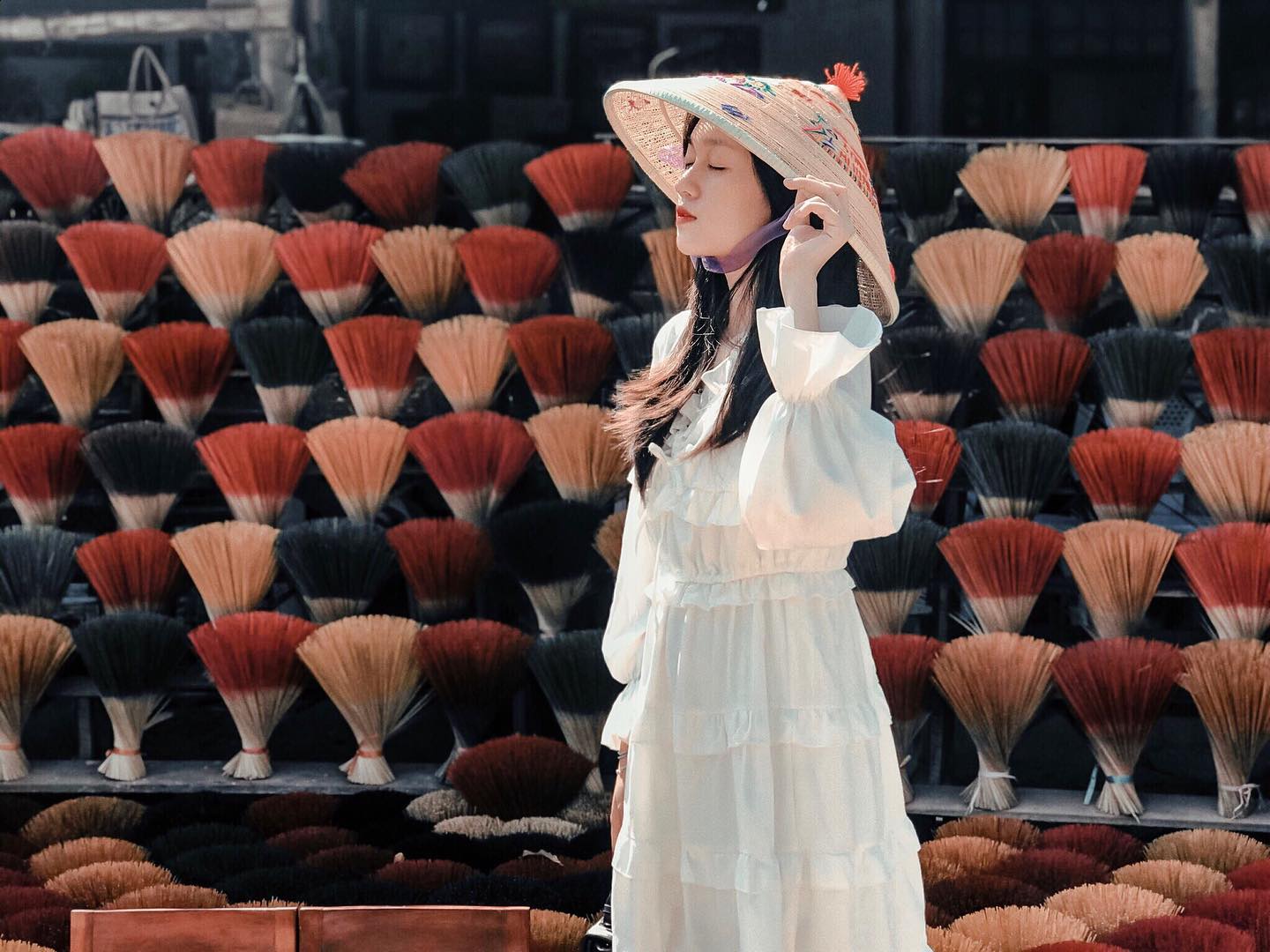
Plenty of photo opportunities
Image credit: @_huyenlinh511_
For the most part, the shop owners here more than welcome guests to pose and snap at their stalls for free, and some even lend you accessories such as conical hats and hand fans to enrich your galleries. But of course, in return, don’t forget to buy something to support them, even if you don’t really need it.
GPS coordinates: 16°26’01.1″N 107°33’46.3″E
6. Tra Que Gardening Village – try living as a farmer for one day
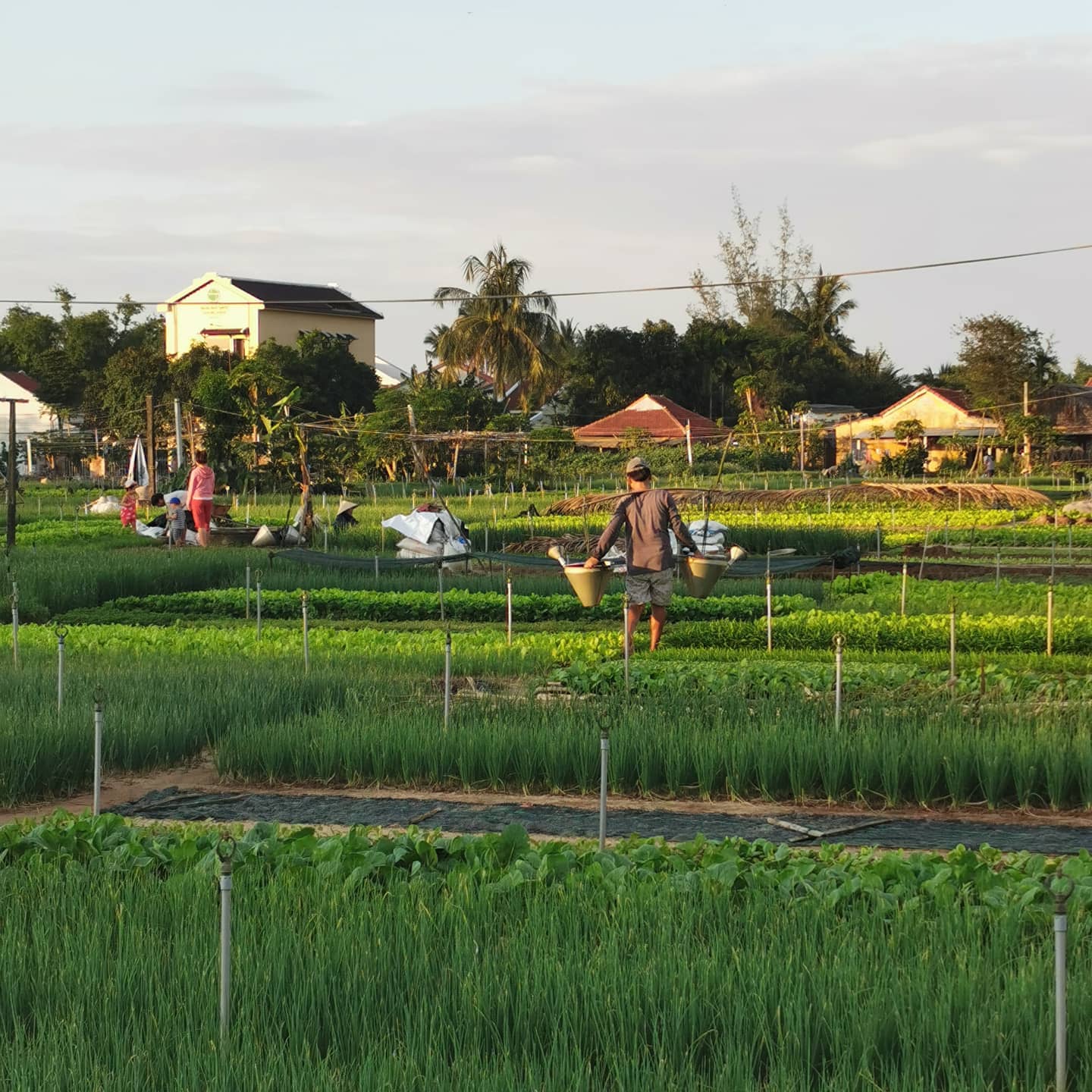
Image credit: @jecup
Hoi An Ancient Town is one of the most popular vacation destinations in Vietnam, famous for its charming ancient buildings and pristine beaches. But 5km from the old town lies a different kind of charm in the form of the Tra Que Gardening Village.
The entire area is covered in lush, peaceful gardens, and its close distance from Hoi An means it’s often a good idea to come here by bicycle, as doing so allows you more time to take in the rustic scenery.
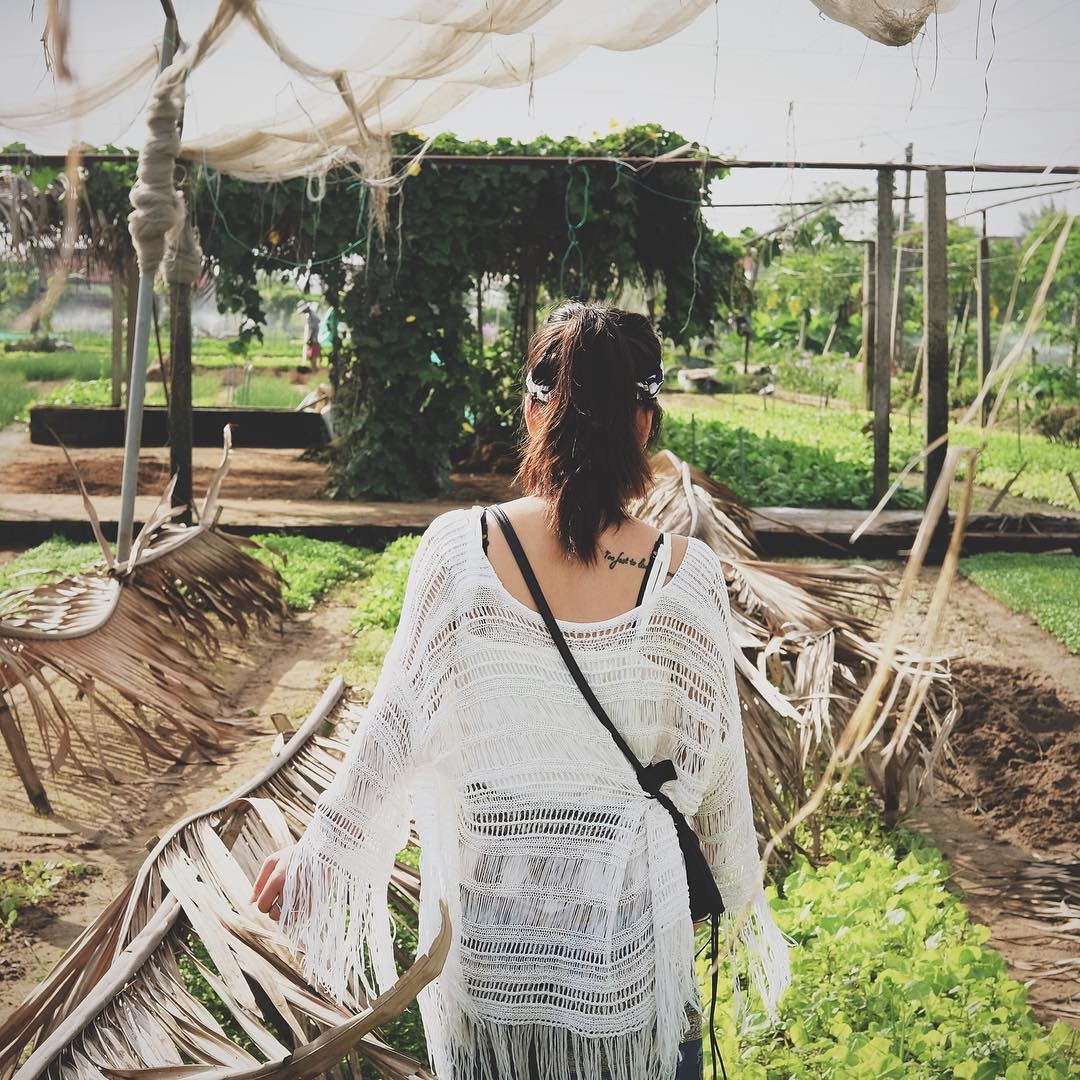
Image credit: @yarrownguyen
If you stay in Hoi An, many hotels offer one-day tours where you’ll cycle here, experience what it’s like to work in one of the gardens, then sit down for a tasty meal full of freshly harvested veggies followed by a foot massage.
GPS coordinates: 15°54’04.1″N 108°20’18.9″E
7. Bau Truc Pottery Village – hand-made pottery with Cham influences
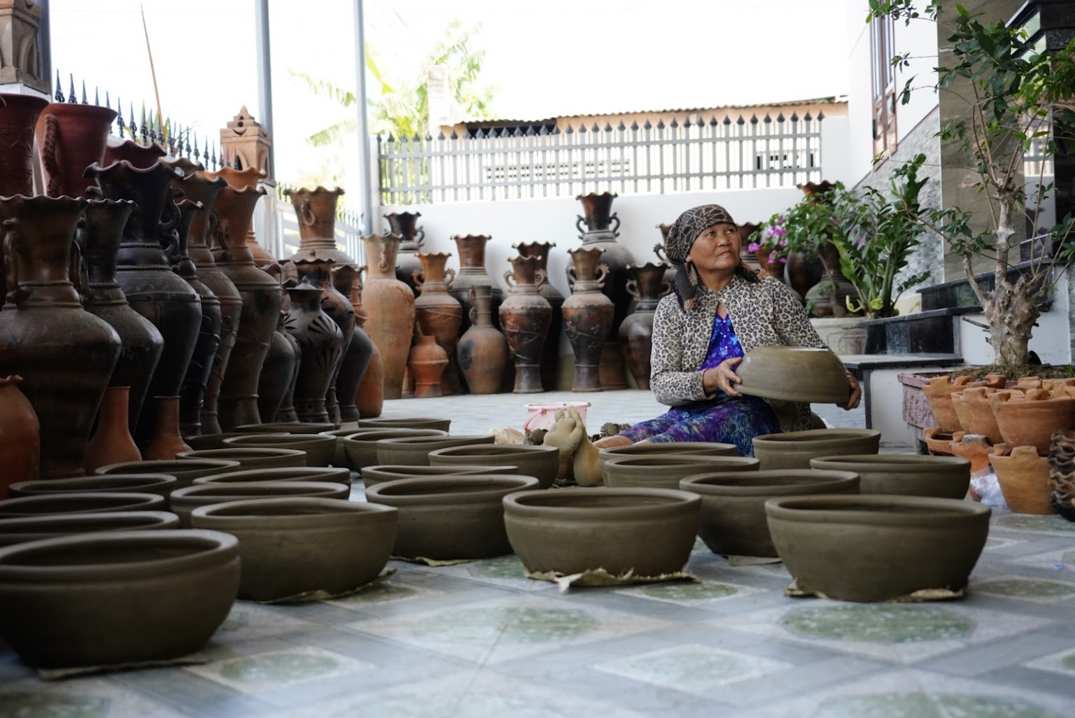
Image credit: Thang Tran
Next to Bat Trang in the north, the Bau Truc Village near the southern province of Ninh Thuan is another village with a long history of making pottery products. However, there are key distinctions between the two.
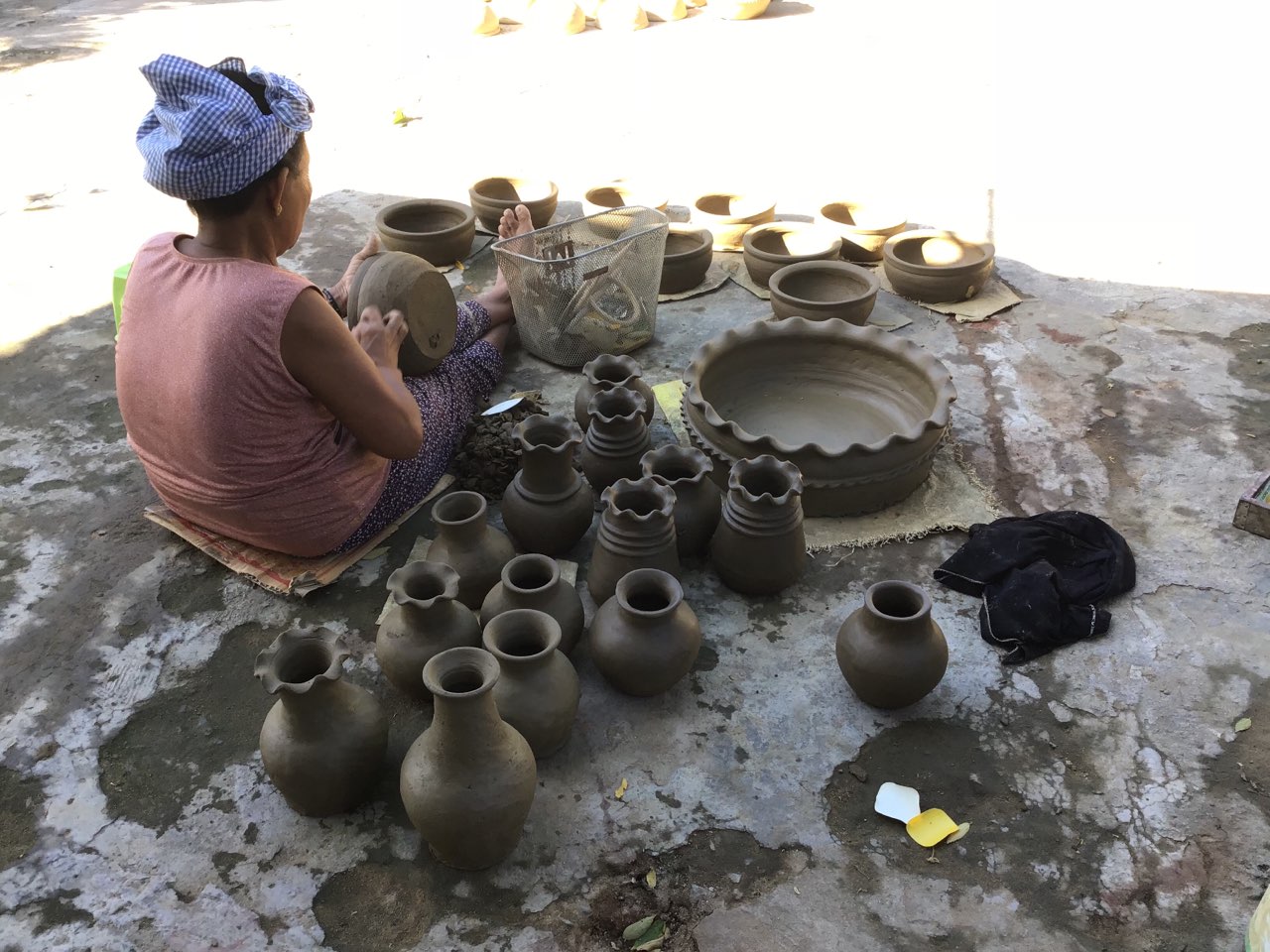
Potteries here are often handmade
Image credit: Nguyễn Danh
For one thing, Bau Truc craftsmen and craftswomen do not use spinning pottery wheels. Instead, the clay is set stationary on a table, and the makers will walk around as they shape it. Once shaped, the products are not baked in kilns either. Rather, they are buried under piles of wood and straw, which are then set on fire.
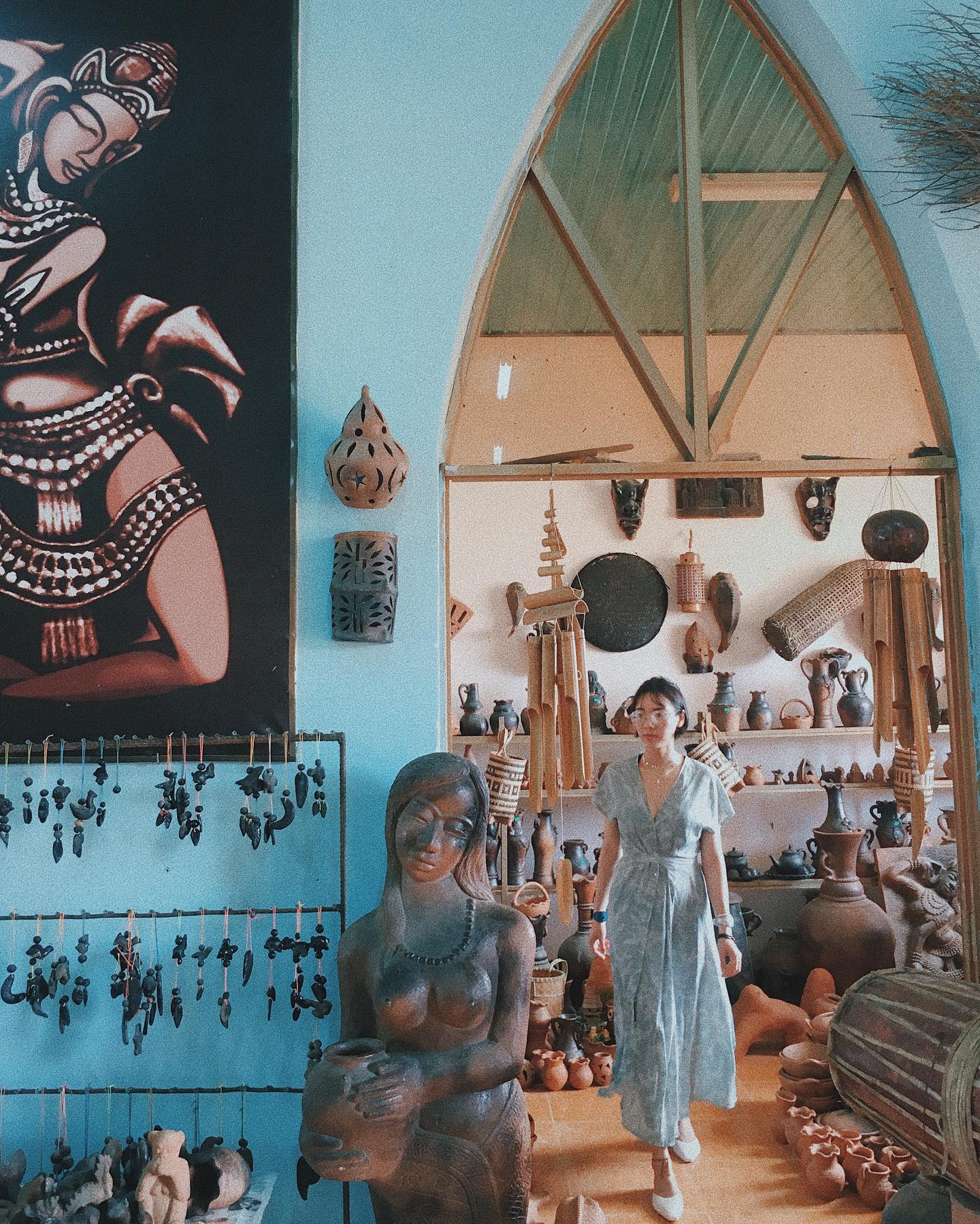
The potteries have more subdued colors and bear Cham influences
Image credit:@mit.sxsx
This more… hand-crafted method results in potteries with more of a rough-edged charm than the colorful, sophisticated ceramic of Bat Trang. Often, they have subdued colors such as brown or black. Also, as Bau Truc citizens comprise mainly of Cham ethnic people, the décor on their statues, vases, and bowls are also heavily influenced by Cham culture. Images of Hindu deities such as the sacred bird Garuda or the elephant-headed god Ganesha are not a rare sight here.
GPS coordinates: 11°31’46.9″N 108°55’31.0″E
8. My Nghiep Traditional Weaving Village – cloth with unique patterns from ethnic minorities
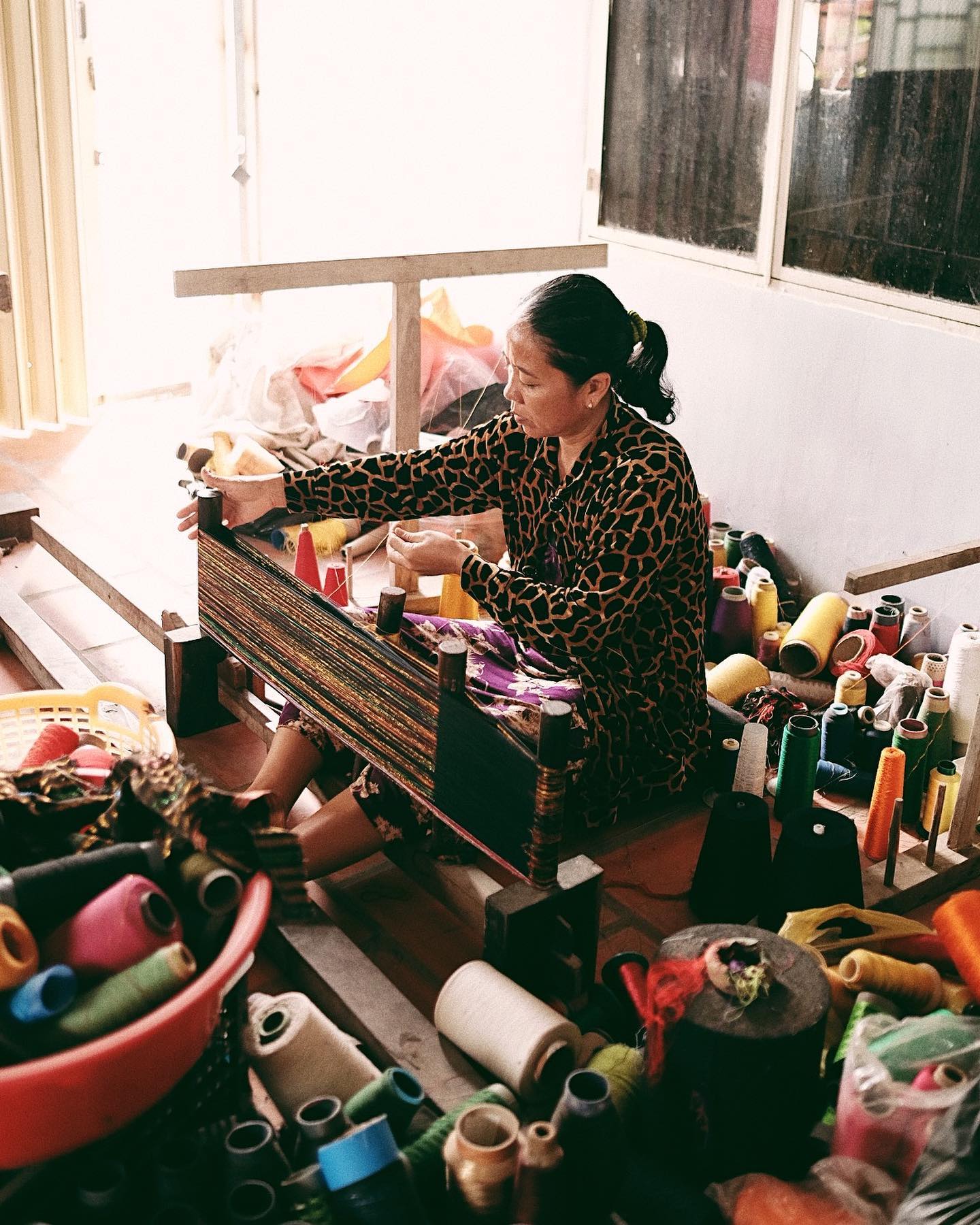
Image credit: @ukiyohomestay
Aside from Bau Truc, My Nghiep Weaving Village is another traditional craft village that’s become a tourist attraction of Ninh Thuan Province. As the name suggests, the village is home to generations of weavers, many of whom are more than happy to show visitors their workplaces and demonstrate how they use weaving looms to turn threads into pieces of cloth.
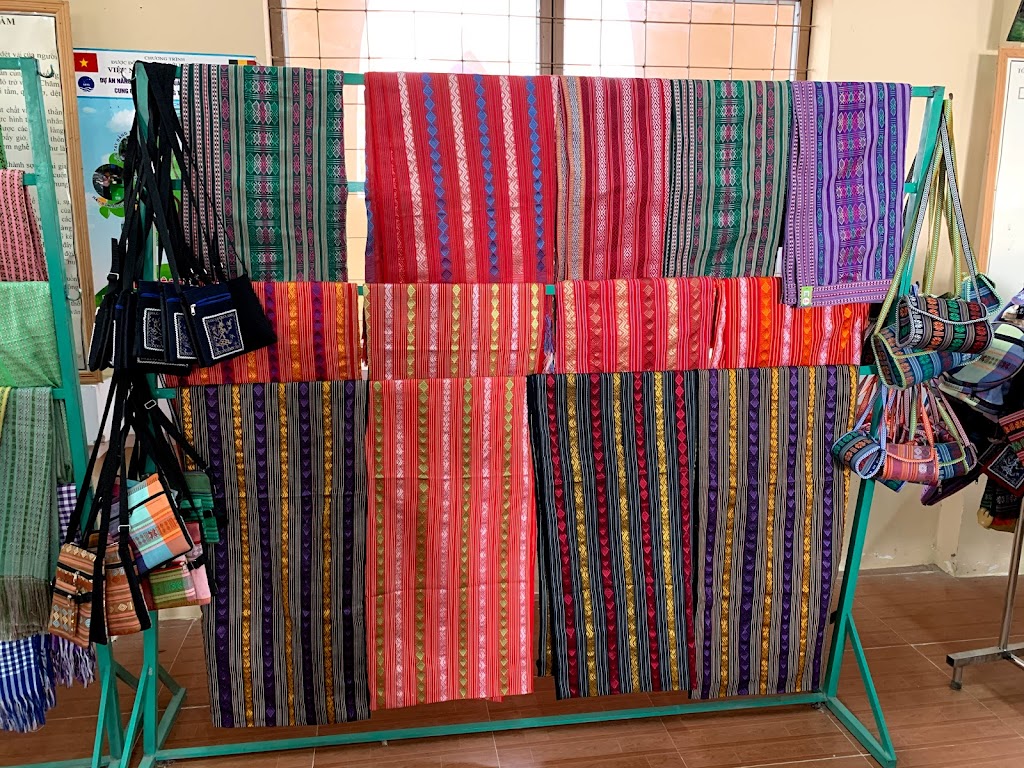
Clothing products from ethnic minority communities have colorful patterns that follow lines
Image credit: Nguyen Thanh Trung
And like its cousin Bau Truc, My Nghiep Village’s products are influenced by Cham culture. You’ll see that the cloth bears colorful patterns that follow straight lines. Of course, many of these fabric products, from scarves to handbags, are for sale.
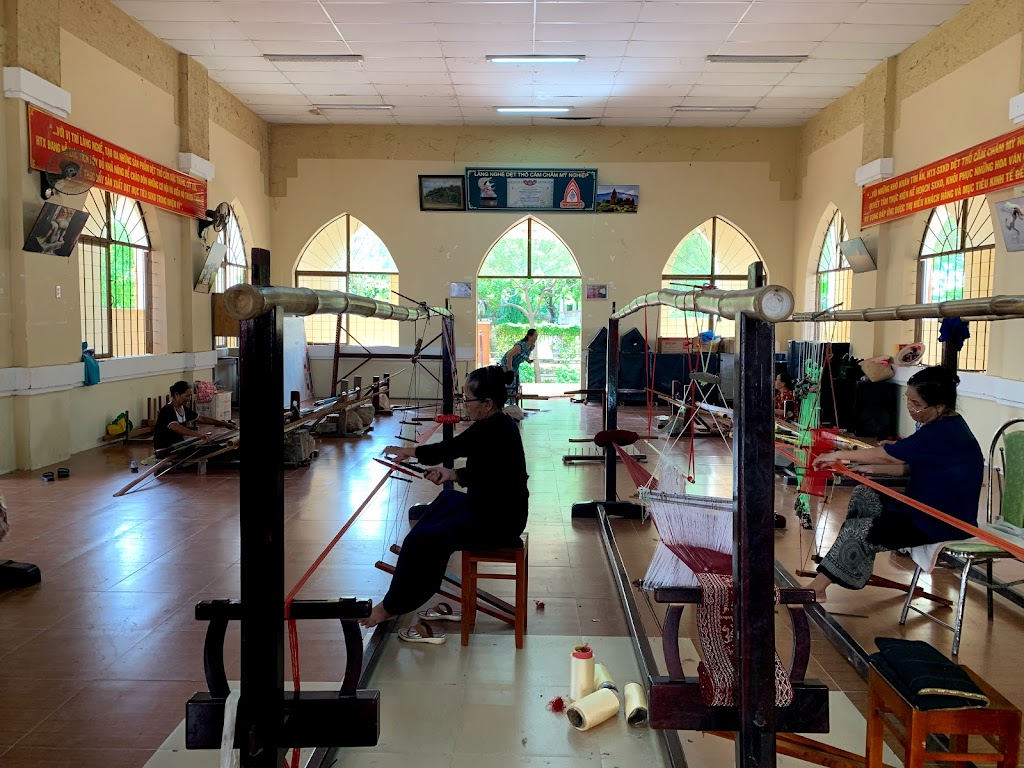
Visit workshops to see weavers demonstrate their skills
Image credit: Trang Ngo
My Nghiep and Bau Truc are only 4km away from each other, so most often, it’s a good idea to check out both in one trip to experience different local crafts.
GPS coordinates: 11°31’17.9″N 108°56’33.8″E
Check out traditional craft villages in Vietnam for a more localized experience
It is true that not all of these traditional craft villages are tourist hotspots with plenty of attractions to visit, but it is for this very reason that they offer a more authentic glimpse into the daily lives of rural Vietnamese people.
So if you’re in for a longer stay in Vietnam, and you’re interested in exploring below the surface level, perhaps these can bring a unique experience few tourists can say they’ve had.
For more stories, check out:
- 7 Saigon landmarks with unexpected pasts
- Hanoi Old Quarter Guide
- 7 adventure sports in Hanoi
- 16 vegan and vegetarian restaurants in Saigon
- 24 hours in Saigon for foodies
Cover image adapted from @lilunabin, @ukiyohomestay, and @_huyenlinh511_
